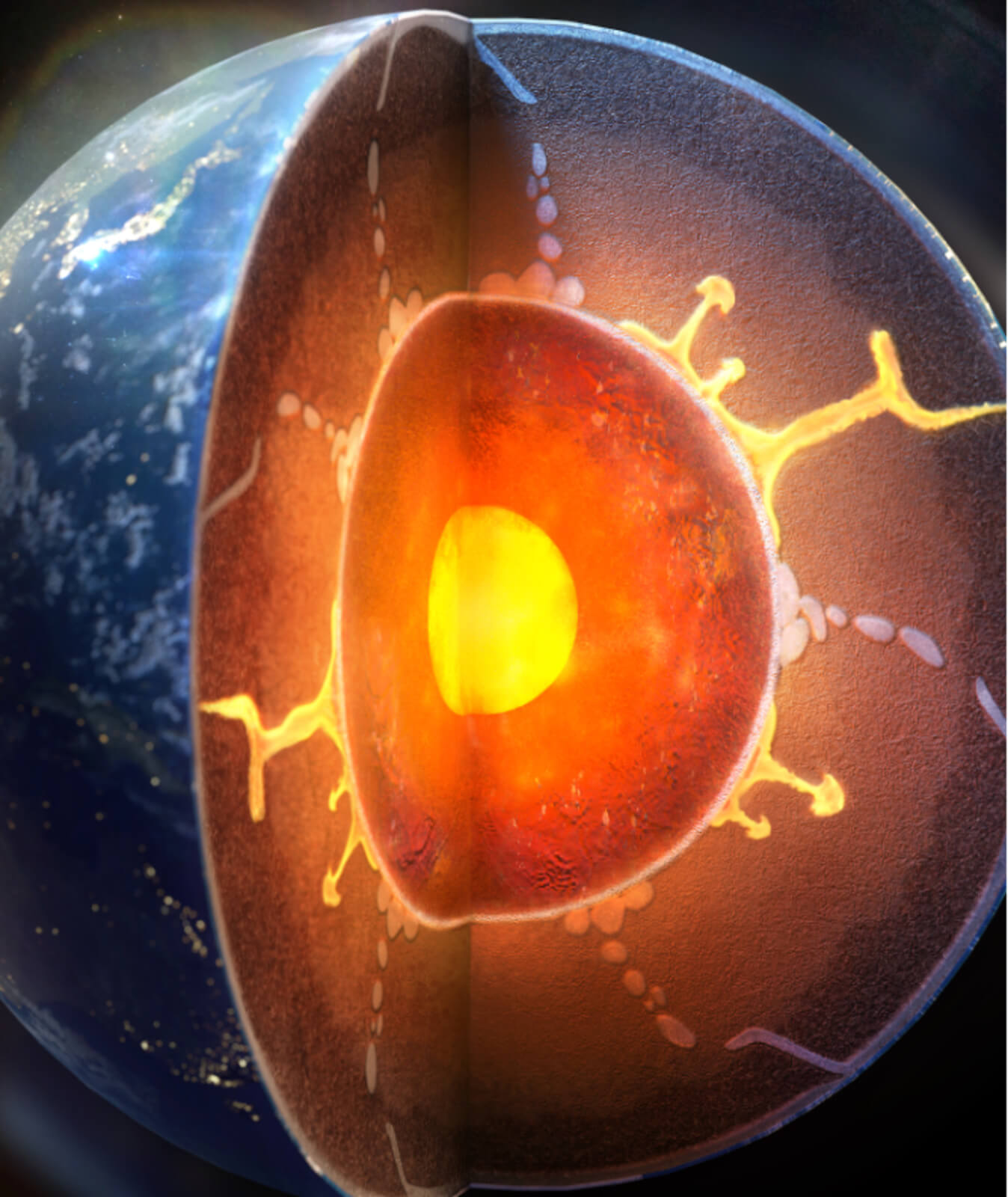TEMPE, Ariz. — A decades-long mystery inside of the Earth has finally been solved. Until recently, the existence of a peculiar region called the E prime layer, located hundreds of miles beneath the planet’s surface, remained a puzzle. However, an international team of researchers, including scientists from Arizona State University, are now shedding light on how water from the Earth’s surface can infiltrate deep into the planet and fundamentally alter its composition.
The study suggests that over billions of years, water from the Earth’s surface has been transported into the planet’s depths by descending tectonic plates, a process known as subduction. When this water reaches the core-mantle boundary, situated approximately 1,800 miles beneath the Earth’s surface, it triggers a significant chemical interaction that transforms the core’s structure.
Through a series of high-pressure experiments, scientists demonstrated that subducted water reacts chemically with core materials. This reaction results in the formation of a hydrogen-rich, silicon-depleted layer, which reshapes the topmost outer core into a film-like structure. Additionally, the reaction produces silica crystals that ascend and become integrated into the mantle. This modified liquid metallic layer is expected to be less dense, with reduced seismic velocities, aligning with anomalous characteristics observed by seismologists.
“For years, it has been believed that material exchange between Earth’s core and mantle is small. Yet, our recent high-pressure experiments reveal a different story,” says study author Dan Shim, a scientist at ASU’s School of Earth and Space Exploration, in a university release. “We found that when water reaches the core-mantle boundary, it reacts with silicon in the core, forming silica. This discovery, along with our previous observation of diamonds forming from water reacting with carbon in iron liquid under extreme pressure, points to a far more dynamic core-mantle interaction, suggesting substantial material exchange.”

This revelation significantly advances our understanding of Earth’s internal processes and indicates a more extensive global water cycle than previously understood. The altered “film” in the core also has profound implications for the geochemical cycles that connect the surface-water cycle with the deep metallic core.
To achieve these findings, an international team of geoscientists utilized advanced experimental techniques at the Advanced Photon Source of Argonne National Lab and PETRA III of Deutsches Elektronen-Synchrotron in Germany. These experiments aimed to replicate the extreme conditions existing at the core-mantle boundary.
The study is published in the journal Nature Geoscience.
You might also be interested in:
- Study of Earth’s inner core reveals a ‘planet within a planet’
- Humans are pumping so much groundwater it’s changing Earth’s spin
- United States still feeling aftershocks from earthquakes in the 1800s!

